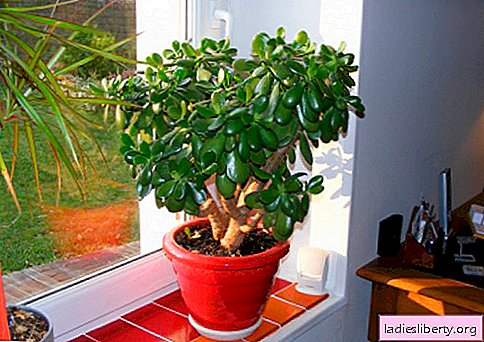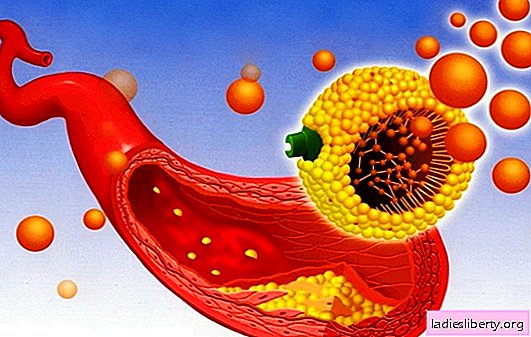
The ancient tradition of using a broom for washing and body care today has gained immense popularity, competing with the sophistication of lavender foam baths and showers with a dozen modes.
Therefore, knowledge about what is the use of brooms in a bath and what to choose among their various types can be very useful.
A broom is simply a tightly knit armful of tree branches or shrubs, usually deciduous, less commonly conifers. There are also brooms from herbs (for example, chamomile).
Fresh brooms are most valued and most beneficial. But, due to natural inaccessibility for most of the year, the product is harvested - dried or frozen.
Making brooms is a science. It is enough to mention that healthy and young plants are chosen for this purpose, and when the parts are separated, the flora is minimally damaged.
Its quality directly depends on the method and quality of drying the broom.
In addition to cleansing the body surface of impurities, brooms affect health at the same time as the essential oils, tannins and other substances present in them penetrate the body through steamed skin and breath.
And although the effect is very diverse relative to different varieties of brooms, it is also realistic to highlight their useful properties the most common. So the broom in the bath:
- as a massage agent enhances blood circulation, and also accelerates the flow of lymph;
- promotes the elimination of harmful substances from the body through sweating;
- strengthens the immune system;
- positively affects the nervous system, acting as a tonic, an activating agent for the growth of working capacity and stress resistance;
- accustoms the respiratory system to deeper, more complete breaths;
- improves heart function, each time smoothly accustoming it to high loads;
- deeply cleanses, moisturizes and nourishes the epidermis, preventing the occurrence of skin diseases and quite noticeably prolonging the youth of the skin.
Scientists have proved that as a means of a complex of other measures, a broom can even help to lose weight, since its use normalizes the metabolic processes and the breakdown of fats.
Birch
It is curious that today such brooms are the most popular, although at the beginning of the last century they were not found more often than from other plants.
It enhances sweating and has a good effect on the kidneys, contributes to the work of the entire urinary system. If after the bath it is planned to take care of the body with cosmetics - only birch leaves will optimally cleanse the skin, prepare for their perception.
Lime
The first among the brooms is recommended for flu and cold seasons, for the treatment of such viral diseases in their early stages - relieving fever, fever.
The linden has more volatile and vitamin C than garlic, plus there is carotene, so the fusion of substances provides the property to treat headaches and sleep disturbances.
Nettle
Delivers a very vivid and not all pleasant, specific sensations. But also - it significantly eases the condition in diseases such as rheumatism and gout. Nettle broom extinguishes joint pain and restores mobility. It also acts as an effective vasodilator.
Oak
Effective partly opposite to birch. Oak broom reduces perspiration, while also treating oily, inflamed skin, making it a matte, even tone.
Due to the presence of unique chemical compounds in the oak leaf, less than any other broom can cause an increase in blood pressure in the bath (and according to statistics, this problem quite often spoils all the fun).
Eucalyptus
It perfectly treats muscle sprains and relieves pain after physical (sports) exertion. But the main properties of eucalyptus, of course, is directed to the respiratory system. Scientists say that with such a broom, you can protect yourself from pneumonia and even tuberculosis.
It also improves sputum discharge and reduces coughing.
Coniferous (juniper, cedar, fir)
Effective for the treatment and prevention of allergic reactions, including intolerance to pollen and animal hair. Quickly and stably improves mood, heals skin diseases and even prevents reproductive system disorders.
Mountain ash
Acts as a power engineer for physical and mental activity, increases efficiency. It also normalizes pressure, preventing its sharp jumps up.
With it, you can accelerate the healing of small wounds and scratches, the disappearance of bruises.
Some subtleties of using a broom in a bath
Average dry change the broom to a new one after 2-3 sessions use and there is no point in saving - a long-serving broom does not bring any benefit.
Fresh brooms just need to rinse with water, dry - always “brew” with hot water (but not boiling water, destructive benefits) for 10-30 minutes, and how to properly steam a frozen broom, in general, you can talk for a very long time.
And it is noteworthy that water after "brewing" often does not disappear. For example, liquid after oak broom suitable for rinsing hair - for shine and dandruff.
The positive qualities of certain brooms are practically equal to the basic beneficial properties of the plants from which they are made.
ON A NOTE! traditional medicine sometimes advises adding brooms with something appropriate raw materials from which they are made. For example, it’s good to eat linden honey after a bath with a linden broom, and after currant bath, drink tea with a leaf.
Usually, one broom is taken on a trip to the bath, but it is not forbidden to combine their varieties and even more. Sometimes a combination of different greens in one broom has an optimal, best result.
It’s worth starting with the fact that for the most healthy person, a broom can be a significant hazard when misused.
At least what it threatens - pains in a flushed body and spoiled rest. Inappropriate use can affect the problems with the musculoskeletal system, respiratory system.
In a word, if there is no skill and experience, the broom should be used carefully, not with all its might.
And of course, you need to know about cases in which, in order to avoid harm from a broom in a bathhouse.
They do not touch it at all, if there is:
- oncological diseases;
- menstruation;
- late pregnancy;
- serious heart disease;
- open wounds and wounds with recent sutures, extensive ulcers;
- tendency to fainting;
- high body temperature with a cold, viral disease.
Regarding the latter, it is worth adding that each case of such an ailment is individual.
Regarding the admissibility of visiting the bath, it is advisable to consult with a specialist.
It is not recommended to take a broom at night. The previously mentioned tonic effect will only lead to insomnia.
It is also worth considering the harm of a broom in the bathhouse, such as the likelihood of developing an allergy to plants in general and individual probable specific reactions to them.
For example, nettle is not suitable for a number of blood diseases (increased coagulability) and blood vessels (varicose veins).
Before you go to the bath, check out the introductory video: how to broom properly steamed:











